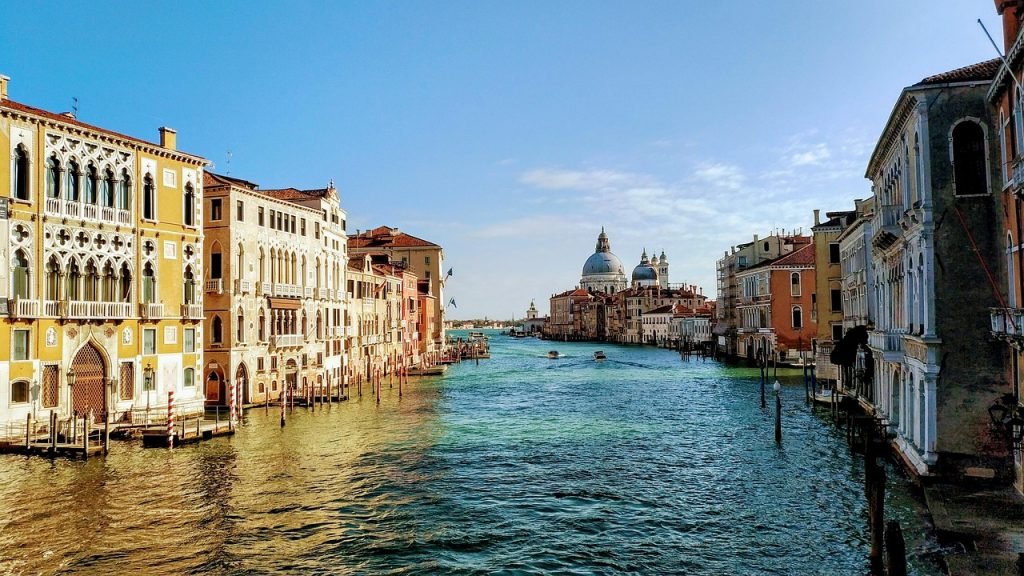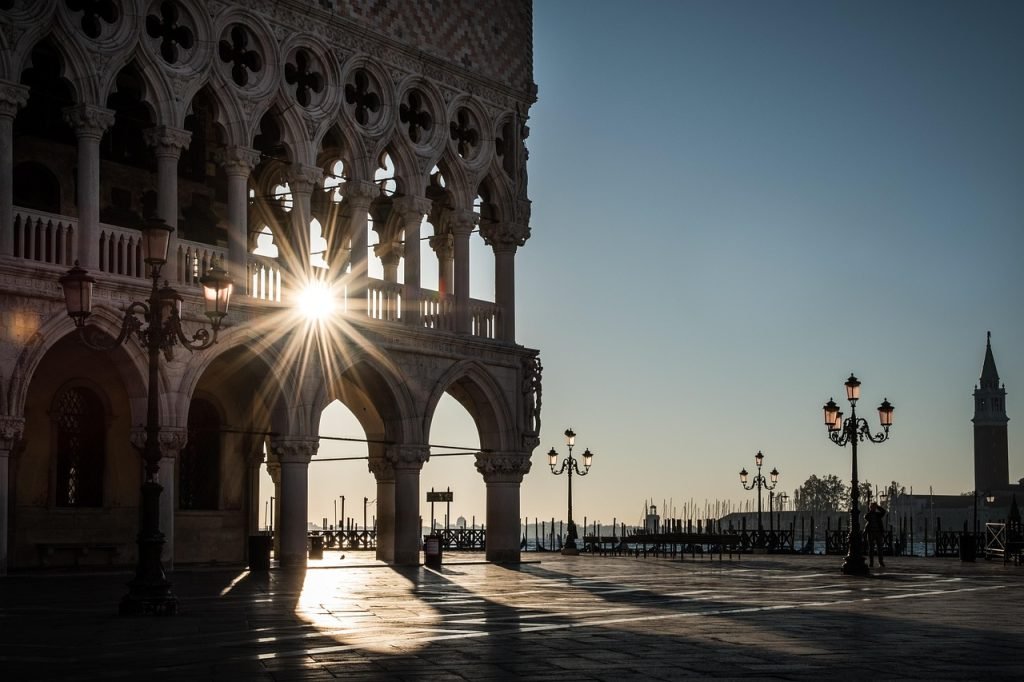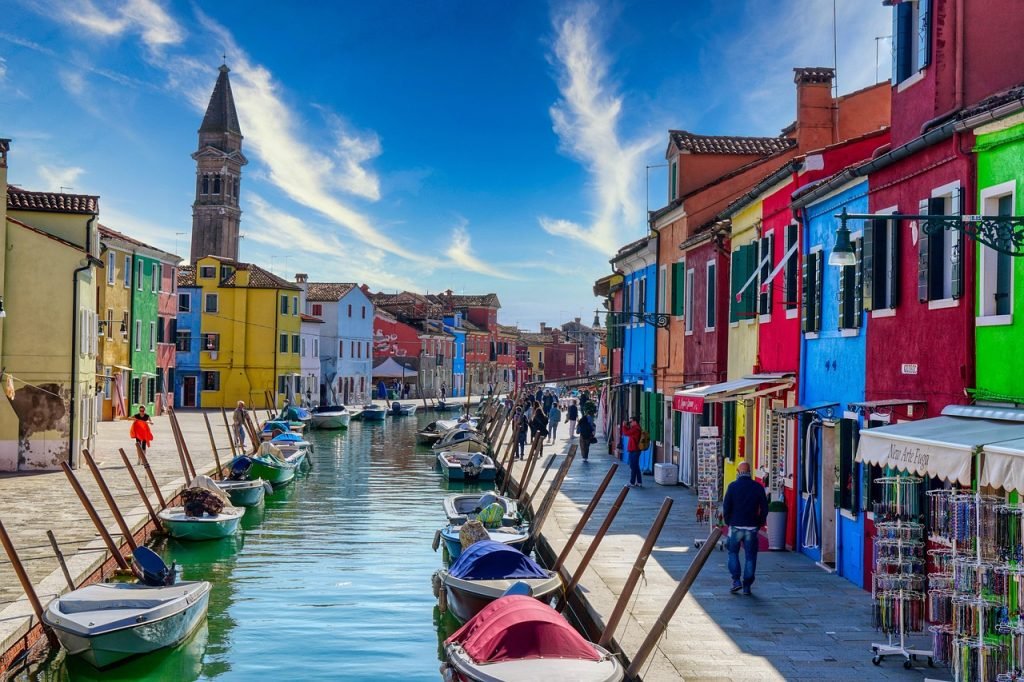Ciao! After a decade of regular visits to La Serenissima—roughly ten times a year for work and pure pleasure—I’ve learned that Venice is like a complex melody. The first time you hear it, you’re overwhelmed by its obvious beauty. But return again and again, and you start to pick up the subtle harmonies, the quiet interludes, the breathtaking crescendos that most visitors miss entirely.
Let me share with you the Venice I know: not just the postcard-perfect façade, but the living, breathing city that continues to surprise me even after all these years. This isn’t another generic tourist guide—it’s an invitation to experience Venice as the Venetians do, or at least as close as an outsider can get.
Understanding Venice: The Six Sestieri and Their Secrets
Venice is divided into six historic districts called sestieri—San Marco, Castello, Cannaregio, San Polo, Santa Croce, and Dorsoduro. These ancient divisions aren’t just administrative boundaries; they represent distinct personalities within the city’s character. Interestingly, this six-fold division is immortalized in Venice’s most famous symbol: the ferro (the distinctive metal prow) of every gondola features six forward-facing prongs representing each sestiere, plus a backward-facing one symbolizing Giudecca island.
Understanding these neighborhoods is crucial because Venice reveals different faces in each sestiere. San Marco dazzles with imperial grandeur, Castello pulses with local life, Dorsoduro buzzes with artistic energy, and so on. As you explore, you’ll start to feel these distinct rhythms and choose your favorites based on your mood and interests.
Venice operates on what I call “island time”—things move at their own pace, and fighting this rhythm will only frustrate you. Embrace it. Get lost. Miss that vaporetto. Duck into that osteria when it starts raining. The city rewards spontaneity and punishes rigid schedules.
San Marco: Beyond the Obvious Magnificence
Yes, you absolutely must see Piazza San Marco—but not at noon when it’s drowning in tour groups. Come at dawn, around 6:30 AM, when the pigeons own the square and the morning light turns the Basilica’s mosaics into pure gold. The silence is almost sacred, broken only by the gentle lapping of the lagoon and the distant clatter of café chairs being arranged.
Basilica di San Marco deserves more than a hurried visit. Book the museum tour to access the loggia and see the original bronze horses. Stand there for a moment, looking out over the square that Napoleon called “Europe’s drawing room,” and you’ll understand why Venetians once believed they ruled the world.
Palazzo Ducale (Doge’s Palace) is magnificent, but here’s the insider move: book the “Secret Itineraries” tour. You’ll see Casanova’s prison cell, cross the infamous Bridge of Sighs from the inside, and explore the hidden chambers where the Republic’s real power resided. The regular tour shows you the grandeur; the secret tour shows you the intrigue.
Campanile di San Marco offers Venice from above—if you can handle the crowds and the elevator ride. The view is undeniably spectacular, but here’s my advice: go early morning or late afternoon when the light is dramatic and the lines are shorter.
Scala Contarini del Bovolo is Venice’s most famous spiral staircase, hidden in a small courtyard. The external spiral (bovolo means snail shell in Venetian dialect) offers unique views over the city’s rooftops. It’s easily missed, but the climb rewards you with perspectives of Venice that few visitors see.
Castello: Where Venice Lives and Breathes
This is my favorite sestiere, where tourism thins out and authentic Venice emerges. Campo Santa Maria Formosa is a perfect example—a gorgeous square surrounded by cafés where you can actually have a conversation without shouting over tour guides.
Giardini della Biennale and the adjoining Via Giuseppe Garibaldi offer the most authentic glimpse of residential Venice. This is where you’ll encounter Venetians living their daily lives—children playing football in the street, elderly men playing cards outside bars, women hanging laundry between buildings, and the kind of neighborhood gossip that has been the soundtrack of Venice for centuries. Via Garibaldi, one of Venice’s few actual streets (most are calli or fondamenta), bustles with local shops, unpretentious bacari, and the easy rhythm of people who call this extraordinary city home.
Arsenale once built the ships that made Venice a maritime empire. The museum is fascinating, but even more impressive is simply walking around the complex’s massive walls. On the first Sunday of each month, parts normally closed to the public open up—check locally for details.
For a profound experience, visit San Zaccaria Church just after morning mass. The Bellini altarpiece alone is worth the trip, but the flooded crypt below the church is absolutely haunting. Water laps at ancient columns while fish swim between your feet—it’s Venice’s relationship with the sea made manifest.
Dorsoduro: Art, Aperitivos, and Authentic Moments
Peggy Guggenheim Collection is deservedly famous, but time your visit for late afternoon. The sculpture garden overlooking the Grand Canal at golden hour is pure magic. Peggy is buried here with her beloved dogs—there’s something touchingly human about this detail in a city of grand monuments.
Punta della Dogana and Palazzo Grassi showcase contemporary art in historic spaces. The juxtaposition can be jarring or brilliant, depending on the exhibition and your mood.
But here’s my real Dorsoduro secret: Campo San Margherita in the evening. This is where university students, artists, and remaining locals gather. The campo transforms from a quiet morning market square into Venice’s closest approximation of a piazza romana—loud, chaotic, and absolutely alive.
For the perfect Venetian aperitivo, there’s only one place that truly captures my heart: Al Bottegon (also known as Osteria del Vino già Schiavi). This is hands down my favorite bacaro in all of Venice—a tiny, authentic osteria that’s been serving cicchetti and wine since the Renaissance. The atmosphere is pure Venice. Order an ombra de vin and whatever catches your eye. This place embodies everything I love about Venetian bacaro culture.
San Polo and Santa Croce: Market Life and Hidden Treasures
Rialto Market is Venice’s beating commercial heart and has been for a thousand years. Come early—by 7 AM, the fish vendors are already negotiating with restaurant owners over the day’s catch. The energy is infectious, the dialect incomprehensible, and the seafood impossibly fresh.
Rialto Bridge itself is tourist chaos during the day, but cross it at dawn or dusk and you’ll understand why painters have been obsessing over this view for centuries. The Grand Canal stretches in both directions, lined with palazzos that seem to float on water.
In San Polo, you’ll find one of Venice’s absolute treasures: Scuola Grande di San Rocco, which is Tintoretto’s Sistine Chapel. The artist spent 23 years covering every surface with biblical scenes, creating what many consider his masterpiece. The ceiling mirrors on the ground floor let you examine the paintings without craning your neck. This is one of Venice’s most profound artistic experiences and exemplifies the artistic wealth hidden throughout the sestieri.
In San Polo, seek out Chiesa di San Giacomo di Rialto—allegedly Venice’s oldest church and definitely its most weathered. The 24-hour clock on its façade has been marking Venetian time since the 15th century.
For a completely different experience, visit Ca’ Pesaro, which houses both the International Gallery of Modern Art and the Oriental Art Museum. It’s criminally undervisited, meaning you can actually contemplate Klimt and Chagall in peace.
Cannaregio: The Venice Tourists Miss
This is where I always send friends who want to understand “real” Venice. Strada Nova is the main thoroughfare, but step into any side street and you’re in residential Venice—laundry fluttering between buildings, neighbors gossiping from windows, children playing in tiny campos.
Jewish Ghetto is historically significant and deeply moving. The Museum of Hebrew Art tells a story of persecution and resilience, while the surrounding area maintains a distinct character. The word “ghetto” actually comes from the Venetian term for the foundry that once operated here.
Madonna dell’Orto is Tintoretto’s parish church and his masterpiece. The artist is buried here, surrounded by his own paintings. It’s intimate in a way that major tourist churches aren’t—you feel like you’re intruding on a private conversation between the painter and his God.
For authentic dining, Oficina Ormesini serves traditional Venetian cuisine without tourist markup. The sarde in saor (sweet and sour sardines) here is exactly what my nonna would have made.
Giudecca: Venice’s Best-Kept Secret
Most visitors never make it to Giudecca, which is precisely why you should. This long, narrow island offers something Venice proper can’t: space to breathe and unobstructed views of the city skyline.
Chiesa del Redentore by Palladio is architecturally perfect and historically significant—built to thank God for ending a plague outbreak. But more importantly, the steps outside offer the best panoramic view of Venice. Come for sunset and watch the city turn gold, pink, then deep purple.
The Hilton Molino Stucky is built in a converted flour mill and offers the only rooftop bar with 360-degree views of Venice and the lagoon. It’s expensive but worth it for a special occasion aperitivo.
The Islands: Each with Its Own Character
Murano is famous for glass, but beyond the factory tours, it’s a working town with excellent restaurants and far fewer crowds. Da Romano in Burano has been serving seafood to locals for generations—their risotto di go (with goby fish) is extraordinary.
Burano is impossibly photogenic with its rainbow houses, but it’s also a functioning fishing village. Visit Museo del Merletto to understand the incredible skill behind Burano lace, then walk the back canals where fishermen still mend nets and women still make lace by hand.
Torcello feels like Venice in reverse—instead of a city rising from the water, here you see civilization being reclaimed by the lagoon. Santa Maria Assunta contains some of the most beautiful Byzantine mosaics in Italy, and the climb up the campanile reveals the lagoon’s haunting vastness.
Navigating Venice Like a Local
Transportation wisdom: Buy a weekly transport pass if you’re staying more than three days. Learn the main vaporetto lines (1, 2, and 6 will get you almost anywhere), but remember that walking is often faster and always more interesting.
Timing is everything: Venice transforms completely between day and night, season to season. Here’s an insider secret that transforms your experience: many of Venice’s most famous areas become remarkably peaceful after dark. Piazza San Marco, which teems with crowds during the day, becomes almost mystical at night with just a few romantic couples and the gentle glow of café lights. The same applies to the Rialto Bridge and major campos—what feels impossibly crowded at noon can be surprisingly intimate at 10 PM. Summer brings overwhelming crowds but also magical late evening light that lasts until nearly 9 PM. Winter can be wet and foggy but also mystical and intimate. Spring and fall offer the best balance.
Get lost intentionally: The best Venice experiences happen when you abandon your map and follow your curiosity. That tiny bridge leads somewhere interesting. That mysterious passageway connects to something unexpected. Venice rewards wanderers.
Eating and Drinking: Beyond Tourist Traps
Bacari culture is essential to understanding Venice. These are small bars serving cicchetti (Venetian tapas) and ombra (small glasses of wine). Cantina Do Mori near Rialto is the oldest, serving customers since 1462. All’Arco offers the most creative cicchetti. Osteria alle Testiere is tiny, expensive, and absolutely worth it for the seafood.
Avoid anywhere with: tourist menus in multiple languages, aggressive touts outside, or laminated menus with pictures. Seek out places with: handwritten menus in Italian, locals at the bar, and that slightly chaotic energy that suggests real Venetian life.
Spritz culture: Yes, Aperol Spritz is touristy now, but it’s also genuinely Venetian. Order it with Select (a local bitter) instead of Aperol for authenticity points. The ratio should be 3-2-1: prosecco, bitter, soda water.
The Art of Slow Travel in Venice
Here’s what a decade of Venice visits has taught me: the city reveals itself gradually, like layers of paint on a Renaissance canvas. Your first visit will be overwhelming—all superlatives and sensory overload. Your second will be more selective—you’ll skip some obvious sights to explore neighborhoods. By your third, you’ll start to develop preferences, favorite campos, preferred routes through the maze.
I still discover new details every visit: a carved lion’s head above a doorway, a hidden garden glimpsed through an open gate, a reflection in a canal that perfectly frames a palazzo. Venice rewards attention and punishes haste.
Practical Magic: Making Venice Work for You
Accommodation wisdom: Stay in San Polo or Castello for authentic neighborhood life with reasonable access to major sights. Cannaregio offers excellent value and local flavor. San Marco is convenient but expensive and touristy.
Weather realities: Acqua alta (flooding) is part of Venice’s charm and challenge, occurring primarily during winter months when high tides, wind direction, and atmospheric pressure align. When water levels are predicted to exceed 100cm above mean sea level—check the official forecasts at https://www.comune.venezia.it/it/content/centro-previsioni-e-segnalazioni-maree—pay particular attention to San Marco, which sits at the city’s lowest point and floods first. The city provides raised walkways (passerelle) during significant flooding, and locals navigate with impressive nonchalance. Carry plastic bags for your shoes, embrace the adventure, and remember that flooded Venice offers some of the most atmospheric and memorable experiences the city can provide.
Respect the city: Venice is fragile environmentally and socially. Don’t feed pigeons, don’t swim in canals, don’t climb on monuments, and remember that this is someone’s home, not just your vacation backdrop.
Seasonal Secrets
Winter brings fog that turns Venice into a film noir set, incredible lighting for photography, and the authentic rhythm of local life without tourist overlay. Restaurants offer heartier fare, museums are uncrowded, and the city feels genuinely mysterious.
Spring means wisteria cascading over garden walls, perfect light for photography, and the lagoon coming alive with bird migration. It’s my favorite time to visit.
Summer brings heat, crowds, and long days with light lasting until nearly 9 PM. The city buzzes with energy, outdoor dining expands into every available campo, and the lagoon beckons for island hopping.
Fall offers dramatic skies, comfortable temperatures, and Venice at its most photogenic. The light is golden, the tourist crowds thin, and locals reclaim their city.
The Venice That Stays With You
After all these visits, what keeps drawing me back isn’t just Venice’s obvious beauty—though that never gets old. It’s the city’s ability to make you feel like you’re part of something larger than yourself, connected to centuries of human ambition, creativity, and adaptation.
Venice is a meditation on impermanence and human audacity. Every morning, the city rises from the lagoon like a daily miracle. Every evening, it settles back into the water like an ancient prayer. To visit Venice is to witness the ongoing conversation between human ambition and natural forces, between preservation and change, between the weight of history and the lightness of beauty.
Come with curiosity instead of expectations. Venice will surprise you, frustrate you, enchant you, and ultimately change you. Just like it has changed everyone who has ever fallen under its impossible spell.
Buon viaggio!


